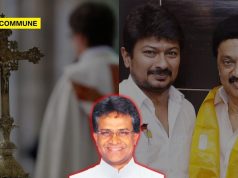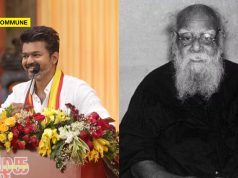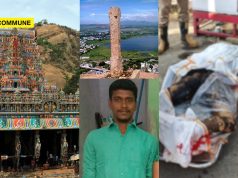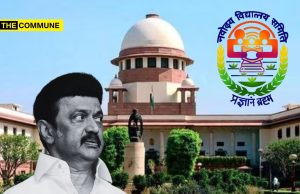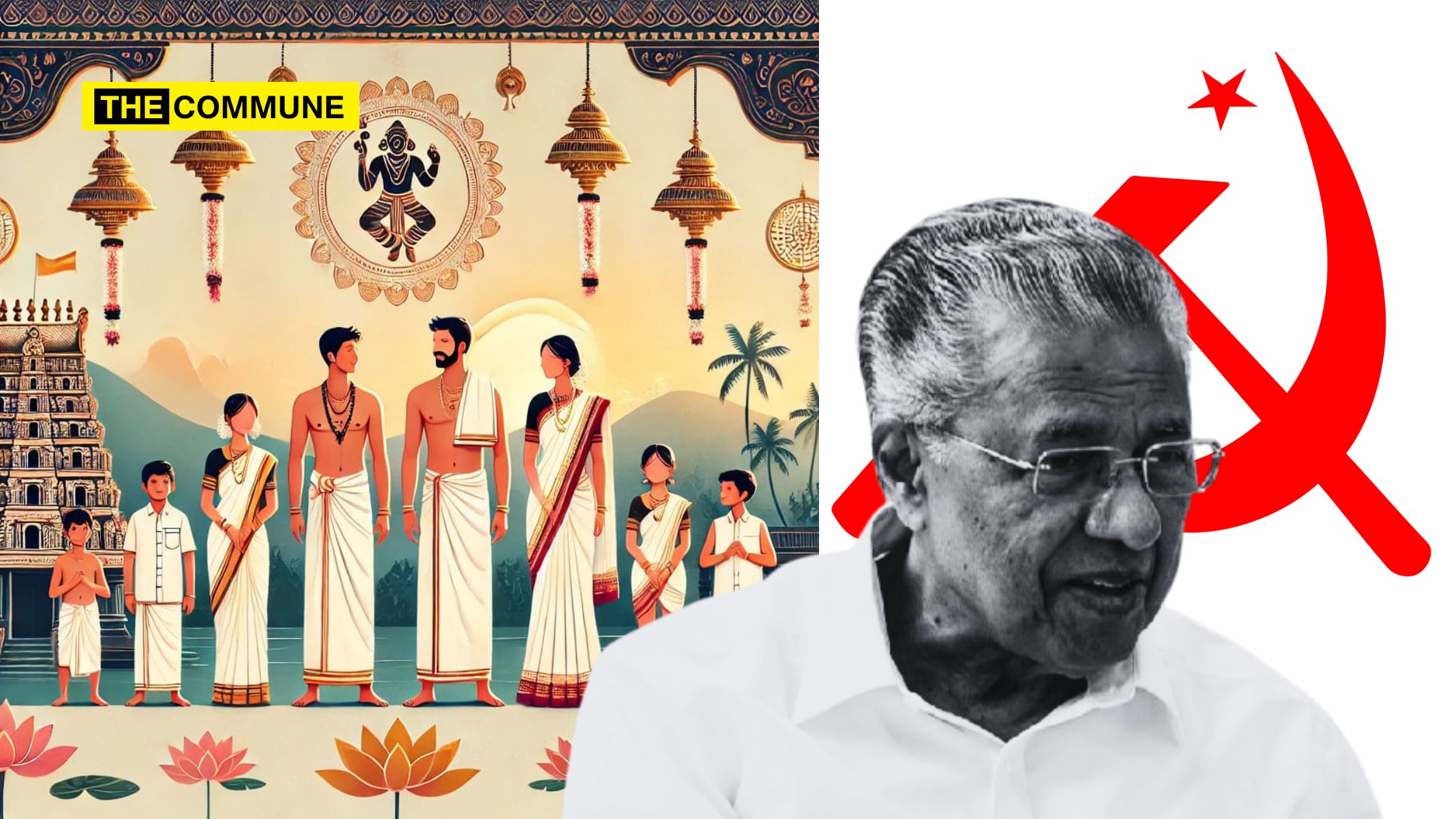
As Kerala faces a looming financial crisis and soaring unemployment, one might expect its political leaders to focus on economic revival. Instead, the Communist Party has stirred controversy over an age-old temple dress code tradition: the practice of men entering temples shirtless.
This latest assault on Hindu customs has triggered widespread debate, raising questions about whether the Kerala government is genuinely progressive or simply targeting Sanatana Dharma.
The Controversy
The issue arose during the inauguration of the Sivagiri pilgrimage, an event attended by Kerala Chief Minister Pinarayi Vijayan and other political leaders. During his address, Swami Sachidananda, president of the Sri Narayana Dharma Sanghom, remarked on the tradition of shirtless entry in some temples under the Sree Narayana Trust. He suggested that this practice be abolished.
The Chief Minister, speaking after Swami Sachidananda, endorsed the idea, extending it to other temples. Labelling the move as a “progressive measure,” Vijayan framed the tradition as outdated, setting the stage for a more significant cultural and political debate.
Swami Sachidananda’s suggestion, originally specific to temples under the Sree Narayana Trust, quickly snowballed into a statewide issue. Leaders from both political spectrums voiced their opinions, but Communist leader M.V. Govindan drew the sharpest criticism.
Govindan branded Sanatana Dharma as “obscene,” stating, “The exact meaning of Sanatana Dharma is the chaturvarnya system based on Manusmriti. In fact, it is obscene in this era.”
“Sanatana Dharma is Obscene.” ~ Communist Leader
Another Communist leader, M.V. Govindan, joined the bandwagon. He went a step further, stating that “Sanatana Dharma is obscene.”
This is what he said: “The exact meaning of Sanatana Dharma is the chaturvarnya system based on… pic.twitter.com/GcOdGiet7b
— Anand #IndianfromSouth (@Bharatiyan108) January 6, 2025
This narrative is not new among leftist circles, which frequently blame the Manusmriti for caste discrimination while conflating the Varna system with the rigid caste hierarchies introduced during colonial rule. They conveniently ignore the Bhagavad Gita’s explanation of Varna, where Krishna states, “Chaturvarnyam Mayasrishtam” (The four categories of occupations were created by me). It is rooted in nature and occupation, not birth.
Selective Activism By Communists
Kerala’s Communist Party has long targeted Hindu traditions under the pretext of modernization while remaining silent on regressive practices in other religions.
For instance, the party raises no objections to practices like the hijab, seen as oppressive by some, or circumcision, performed on young boys without their consent. Nor do they question the attire and rituals of Mecca pilgrims, who wear unstitched garments and often remain bare-chested—practices strikingly similar to the Hindu temple customs they criticize.
This choosy activism points to an agenda that prioritizes deriding Hindu traditions while avoiding controversies in other faiths.
Why Men Enter Temples Shirtless
The tradition of shirtless entry into temples is neither arbitrary nor outdated; it is deeply rooted in the spiritual and scientific principles of Sanatana Dharma.
According to Dr. M.S. Sankaran, a renowned endocrinologist and author on Hindu spirituality, temples are spiritual energy centers. The idols housed within them continuously dissipate energy. Removing stitched garments facilitates the absorption of this energy, akin to recharging a battery.
Why do men remove shirts while entering temples?
Let’s understand that all the traditions and rituals connected to Sanatana Dharma were established by enlightened saints such as Agastya, who knew the secrets of our existence. Unfortunately, due to centuries of invasion,… pic.twitter.com/hxcd0hNvUC
— Anand #IndianfromSouth (@Bharatiyan108) January 6, 2025
Additionally, wet clothes serve as excellent conductors of energy, which is why devotees often bathe in temple ponds before entering. This practice ensures that devotees are physically and spiritually attuned to the sanctity of the space.
The tradition also aligns with Agamic principles, where unstitched garments symbolize purity and submission to the deity. Men’s bare chests reflect humility and reverence, while the Panchakaccha (a specific type of unstitched cloth) represents the householder’s effort to stabilize the senses and focus on the divine.
The Panchakaccham is actually an akhanda vastram. Vikaccham anuttariyam nagnascha avastrasya eva cha. Sitting in a puja or even having food or bathing with a torn panchakaccha, without a proper border, and without wearing a proper angavastram and koupeenam is considered to be
— Master Chief Smart(h)an (@SparesofWar) October 5, 2021
The angavastram (upper garment) and koupeenam (loincloth) are also vital elements of temple attire, emphasizing the importance of maintaining both external and internal sanctity during rituals.
Wearing improper attire—such as stitched garments, torn clothes, or unwashed fabric—during rituals is considered disrespectful in Sanatana Dharma. Even simple acts like eating or bathing in Vedic traditions require adherence to specific dress codes, reflecting the sanctity of daily actions.
This reverence extends beyond temples. The Ramayana describes Sri Rama wearing a single cloth and golden pendant while radiating divine energy, demonstrating how simplicity and sanctity go hand in hand.
Sri Narayana Guru’s Legacy
The Sivagiri Mutt, central to this controversy, was founded by Sri Narayana Guru, a revered spiritual leader and social reformer. Guru propagated the Advaita philosophy, emphasizing the unity of all beings and the divine.
Who was Sri Narayana Guru?
Unfortunately, an auspicious occasion like the inauguration of the Sivagiri pilgrimage season was misused by the Communists to target Sanatana Dharma once again.
Sivagiri Mutt was established by Sri Narayana Guru, who lived during the late 19th and… pic.twitter.com/6RYzGmvcPD
— Anand #IndianfromSouth (@Bharatiyan108) January 6, 2025
A pioneer of social equality, Guru sought to uplift marginalized communities while respecting Sanatana Dharma’s spiritual essence. His teachings harmonized personal devotion (Saguna) with universal consciousness (Nirguna), embodying the inclusive nature of Hindu philosophy.
It is ironic that an occasion to honor his legacy was overshadowed by political agendas aimed at dismantling the very traditions he revered.
The ongoing debate over shirtless entry into temples is emblematic of a larger pattern of targeting Hindu customs under the guise of modernization. Kerala’s Communist Party has repeatedly undermined Sanatana Dharma, framing its rituals as regressive while ignoring their spiritual significance.
This selective criticism starkly contrasts their silence on practices in other religions that could equally be deemed “regressive.” Their unwillingness to apply the same standards across faiths raises serious questions about their intentions.
Every ritual in Sanatana Dharma was established by enlightened saints like Agastya, who understood the intricate relationship between body, mind, and divine energy. These traditions are not mere relics of the past but timeless practices that foster spiritual alignment and inner harmony.
In a state grappling with economic challenges, the Communist Party’s preoccupation with deriding Hindu traditions reflects misplaced priorities and a troubling lack of respect for cultural heritage.
Subscribe to our channels on Telegram, WhatsApp, and Instagram and get the best stories of the day delivered to you personally.

